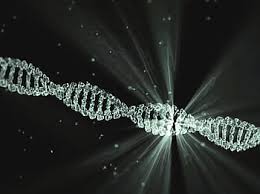Although neurobiologist Oded Rechavi comes from a family of doctors and researchers, it was not his original plan to go into science. “It wasn’t something that I had thought about,” he tells The Scientist. Instead, he went to Paris after high school to train as an artist, exhibited his work in his home country of Israel, and completed mandatory army service before enrolling at Tel Aviv University. “I still didn’t know exactly what I’d do, whether I’d be an artist or something else,” he says.
At university, Rechavi became interested in studying psychology, philosophy, and biology—specifically, the biology of the brain, which fascinated him. He earned a bachelor’s degree in neuroscience in 2006 and then went on to do a PhD, also at Tel Aviv. For his graduate work, he pivoted his focus to immune cells and found that they can exchange macromolecules such as small interfering RNAs (siRNAs) with the cells they scan. These siRNAs can break down messenger RNA molecules, preventing them from being translated into proteins—a process known as RNA interference, or RNAi (Genes Dev, 23:1971–79, 2009). “Now we know that small RNAs are exchanged in many different organs,” he says.
Rechavi continued to study RNA as a postdoc in Oliver Hobert’s lab at Columbia University in New York. “It was pretty clear when he came to visit the lab that he was really very special—incredibly thoughtful, creative, and very excited and engaged about the projects that we discussed,” Hobert says. One of those projects was investigating siRNAs that C. elegans produces as a defense against viral infection. In 2011, Rechavi and colleagues demonstrated that the worms passed down those siRNAs from parent to offspring (Cell, 147:1248–56). “There’s no virus that infects C. elegans efficiently,” Rechavi explains. “Only mutants that are defective in RNA [interference] are infected with viruses, and this could be in part because [nematodes] inherit siRNAs.”
In 2012, Rechavi moved back to Israel and established his own lab at his alma mater. Inspired by human epidemiological studies, which have suggested that famine is associated with an increased risk of diabetes, heart disease, and obesity in subsequent generations, he wanted to see if changes in siRNAs caused by an environmental stressor could be inherited several generations down the line in nematodes. Sure enough, Rechavi’s group, in collaboration with Hobert, showed that starving nematodes passed down siRNAs that cause silencing of genes involved with fat regulation and stress resistance (Cell, 158:277–87, 2014). “We showed that small RNAs leave a mark that’s perceived for multiple generations after starvation,” Rechavi says. Additional studies from his group showed that inherited siRNAs can also have effects on movement and even decision making in the worms.
“He’s got a great model system in C. elegans. . . . It was very impactful, and it shed a new light on these problems,” says Michael Levin, a systems biologist at Tufts University who studies planarian flatworms and has written review papers with Rechavi on RNA inheritance. “I always thought that his work was particularly creative and rigorous, and I think he has a very unique kind of mind.”
Although Rechavi ended up focusing his career on science instead of art, he often looks for ways to combine the two. He’s a research associate in an interdisciplinary group of artists and scientists that focuses on culture, society, and philosophy at the Van Leer Jerusalem Institute. And he’s also using Twitter to organize a February 2020 conference in Tel Aviv informally called “The Woodstock of Biology,” which will feature a collaborative art exhibition focusing on natural resources.







